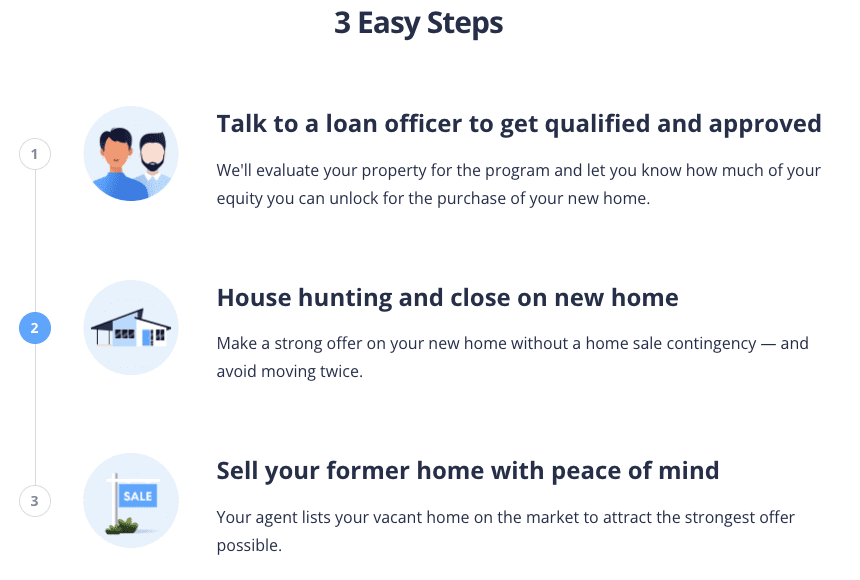HELOC vs. Home Equity Loan: Comparing Equity Options
- Published on
- 10 min read
-
 Richard Haddad Executive EditorClose
Richard Haddad Executive EditorClose Richard Haddad Executive Editor
Richard Haddad Executive EditorRichard Haddad is the executive editor of HomeLight.com. He works with an experienced content team that oversees the company’s blog featuring in-depth articles about the home buying and selling process, homeownership news, home care and design tips, and related real estate trends. Previously, he served as an editor and content producer for World Company, Gannett, and Western News & Info, where he also served as news director and director of internet operations.
As home values continue to rise over time, many homeowners are building substantial equity in their properties. If you’re considering tapping into this equity, you may be wondering which tool is right for you: a home equity line of credit (HELOC) vs home equity loan?
These financing options offer the flexibility to finance home improvements, consolidate debt, or even cover major expenses. But when it comes to a HELOC vs. home equity loan, how do you decide which one is the better fit for your financial goals?
In this post, we provide at-a-glance information to help you understand the differences and similarities between a HELOC and a home equity loan so you can make an informed choice that fits your life and budgeting priorities.
HELOC vs. home equity loan: Differences
A HELOC and a home equity loan are both ways to tap into your home’s equity, but they function quite differently. A HELOC is more like a credit card with a variable interest rate, allowing you to borrow what you need when you need it. In contrast, a home equity loan provides a lump sum with a fixed interest rate, which makes payments predictable.
Let’s break down these two options further to help you understand which might suit your needs better.
Home equity line of credit (HELOC)
- Credit limit with a borrowing period: You’re given a set credit limit and can borrow funds as needed, typically within a 10-year draw period.
- Flexible access to funds: You can withdraw money up to your limit, only paying interest on what you actually use.
- Variable interest rates: Most HELOCs have rates that can fluctuate based on market conditions, affecting your payment amounts.
- Interest-only payments during the draw period: Typically, you’re only required to make interest payments during the borrowing phase, with principal payments starting later.
- Repayment phase after borrowing ends: Once the draw period closes, you’ll enter a repayment phase where you pay back the remaining balance, often over 10 to 20 years. Payments will change based on the amount you draw and the current interest rate.
Home equity loan
- Fixed loan amount: You apply for a specific amount based on your needs and receive it in a lump sum.
- Fixed interest rate: The interest rate is locked in from the start, so your payments remain consistent throughout the life of the loan.
- Predictable monthly payments: Each payment is the same every month, covering both interest and a portion of the principal.
- Ideal for one-time expenses: This option is best suited for large, one-off expenses where you need a set amount of money upfront.
- Repayment over a fixed term: You’ll repay the loan over a predetermined period, typically 5 to 30 years, depending on the loan terms.
HELOC vs. home equity loan: Similarities
- Both are secured loans backed by collateral.
- Borrowed funds can be used as you desire.
- Both incur closing costs.
- Lenders typically allow you to borrow up to 85% of your home’s value, minus the balance of any existing mortgages.
- You may be eligible for tax benefits if the funds are used for qualified home improvements.
- Opening or using either loan can impact your credit score.
- Total costs* generally range from 2% to 5% of the loan or line of credit amount.
*While the costs may be similar, your closing costs will depend on your credit history, the lender, interest rates, and the property.
Calculating your home equity: The formula for determining your home equity is “current market value minus the outstanding mortgage balance.” For a more detailed guide, check out our article on how to calculate home equity.
HELOC vs. home equity loan: Requirements
Both HELOCs and home equity loans require you to meet certain criteria to qualify, as they are secured loans backed by the equity in your home. While specific requirements can vary by lender, there are some general qualifications you’ll need to meet for either option:
- Sufficient home equity: Most lenders require that you have at least 15% to 20% equity in your home. This means your loan-to-value (LTV) ratio should be no higher than 80% to 85% after the new loan.
- Good credit score: A credit score of at least 620 is typically needed for a HELOC or home equity loan, though a higher score can help you secure better terms and interest rates.
- Stable income and employment: Lenders will verify your income and employment history to ensure you can afford the loan payments. They’ll look for a steady job history and sufficient income to cover your current debts and the new loan.
- Debt-to-income ratio (DTI): Most lenders prefer a DTI ratio of 43% or lower. This means your monthly debt payments, including your potential new loan, should not exceed 43% of your gross monthly income.
- Property appraisal: An appraisal is usually required to determine the current value of your home and the amount of equity you have. This helps the lender assess how much you can borrow. However, there are some circumstances where a lender may not require an appraisal.
Meeting these requirements doesn’t guarantee approval, but it does give you a better chance of qualifying for a HELOC or a home equity loan. Additionally, stronger financials, like a higher credit score or lower DTI, may help you secure more favorable loan terms.
HELOC vs. home equity loan: Pros and cons
Pros of a HELOC
- Flexibility to handle ongoing or unexpected expenses
- No payments unless you use the funds
- Interest-only payments during the draw period
- Ability to borrow again after paying down the balance
- Can draw account funds for up to 10 years
- Lower startup interest rate followed by a variable rate
- More affordable than some borrowing options
- Easier qualifications than some other loans
Cons of a HELOC
- Expiring credit lines that must be renewed or repaid
- Variable rates that can raise payments and debt
- Easy access that may lead to overspending
- Longer payoff timelines given the deferred principal payments
- Risk of losing your home if the loan isn’t repaid
Pros of a home equity loan
- Lump sum of money for renovations or debt consolidation
- Fixed interest rate throughout the life of the loan
- Consistent monthly payments
- Set repayment schedule for better planning
- Longer repayment periods compared to HELOC (up to 30 years)
- No need to renew or extend the loan agreement
- Lower credit score requirement compared to a HELOC
- Lower closing costs than a traditional refinance
Cons of a home equity loan
- Less flexible loan disbursement and payment terms
- Higher monthly payments compared to HELOC’s initial payments
- Must pay fees and begin payments with interest right away
- Unable to reborrow on the loan while paying down the balance
- Non-renewable loan (must be refinanced anew)
- Potentially higher closing costs than using a HELOC
- Risk of losing your home if the loan isn’t repaid
HELOC vs home equity loan: Best use cases
Choosing between a HELOC and a home equity loan depends on how you plan to use the funds, your financial habits, and how comfortable you are with variable interest rates. Each option has strengths for different situations.
Use a HELOC when…
You need flexible access to funds over time and want the ability to borrow only what you need, when you need it.
- You’re planning a long-term or phased home renovation: A HELOC gives you access to cash as each stage of the project unfolds, helping manage costs and avoid borrowing more than necessary upfront.
- You’re investing in a rental property or side business: A HELOC gives you flexible access to capital you can tap as opportunities arise, without committing to a large lump sum all at once.
- You want to minimize upfront repayment costs: If you’re focused on keeping monthly expenses low in the short term, such as during a career transition or after a large purchase, a HELOC’s interest-only payments during the draw period can offer breathing room.
Use a home equity loan when…
You know exactly how much money you need and want predictable payments over a set term.
- You’re consolidating high-interest debt: A lump-sum loan at a fixed rate can help pay off credit cards or personal loans with a single, structured repayment plan.
- You’re funding a one-time major purchase: Whether it’s paying for a wedding, college tuition, or a vehicle, the stability of fixed payments helps with budgeting.
- You’re locking in a low interest rate: If rates are favorable, a home equity loan protects you from future increases, making it easier to plan long-term.
HELOC vs. home equity: Loan examples
To better understand how a HELOC and a home equity loan work, let’s look at a simple example using the same house and the same amount of equity.
Imagine you have a home valued at $400,000, and you still owe $250,000 on your mortgage. This means you have $150,000 in home equity. Lenders typically allow you to borrow up to 85% of your home’s value minus the remaining mortgage balance.
In this case, 85% of $400,000 is $340,000. Subtract the $250,000 you owe, and you’re left with $90,000 as the maximum amount you can borrow.
$85,000 HELOC drawing $20,000
You decide to open a HELOC with a credit limit of $85,000, giving you access to this amount over a 10-year draw period. You initially draw $20,000 to cover a kitchen remodel.
- Draw period: During the first 10 years, you can borrow from the HELOC as needed. You only pay interest on the $20,000 you withdrew, not the full $85,000. With a variable interest rate, your payments may vary, but they are lower initially since you’re primarily paying interest.
- Repayment period: After the 10-year draw period, you enter a 10- to 20-year repayment phase. If you still owe $20,000 plus any interest, you’ll now make monthly payments that include both principal and interest until the balance is paid off.
$85,000 home equity loan
Instead of a HELOC, you opt for an $85,000 home equity loan to finance multiple home projects, including the kitchen remodel, a bathroom update, and a new roof.
- Lump sum disbursement: You receive the entire $85,000 upfront in a single payment, which you use to fund the home improvements.
- Fixed interest rate: The loan comes with a fixed interest rate, so your monthly payments are consistent and predictable over the term of the loan, which could be 15 years, for example.
- Repayment schedule: Each month, you make equal payments that cover both interest and a portion of the principal, giving you a clear path to pay off the loan within the 15-year term.
Both options provide ways to tap into your home’s equity, but they serve different purposes depending on whether you need flexible access to funds over time (HELOC) or a lump sum for immediate expenses (home equity loan).
Using equity to buy before you sell
If you’re considering using your home equity to purchase your next home, HomeLight’s Buy Before You Sell program can streamline and simplify the entire process. This modern solution allows you to unlock your equity to make a strong offer on your new home while avoiding the stress of timing the sale of your current home.
HomeLight’s innovative program also gives you the financial flexibility to move only once and at your own pace, making the transition to your new home smoother and more convenient. Here’s a quick look at how HomeLight Buy Before You Sell works:

HELOC vs. home equity loan: Which is right for you?
Deciding between a HELOC and a home equity loan depends on your financial situation and how you plan to use the funds. Here’s what to consider:
HELOC: If you need flexible access to funds over time for ongoing expenses or projects, a HELOC offers that adaptability. It allows you to draw money as needed, with the advantage of potentially lower initial payments during the draw period. However, keep in mind that the variable interest rates can make budgeting a bit challenging.
Home equity loan: On the other hand, if you need a lump sum for a large, one-time expense and prefer the certainty of fixed monthly payments, a home equity loan might be the better option. Its fixed interest rate and predictable payment schedule make it easier to plan your finances and know exactly when the loan will be paid off.
Evaluate your needs, the amount of equity you have, and your comfort with variable versus fixed interest rates and payments. Speaking with a financial advisor can also help you weigh your options and choose the loan type that best fits your long-term goals.
Header Image Source: (Curtis Adams/ Pexels)




